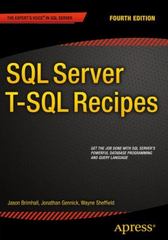Question
This is the requirement and I already have a JAVA code for the game. I need help to convert my code into JAVAFX Homework 5
This is the requirement
and I already have a JAVA code for the game.
I need help to convert my code into JAVAFX
Homework 5 JavaFX and Model-View separation
Due: March 6, end of day
You are to implement a JavaFX project that separates its model (application data and logic) from its view and controller (the JavaFX controls and event handlers that create the user interface). The project must be one of the following two choices:
Heptalion use your hw4, though you are now free to modify it as you see fit. If I have the time, I will upload a solution for hw4 you can use.
Editing the menu example from: http://docs.oracle.com/javafx/2/ui_controls/menu_controls.htm
To get all necessary files, expand the Show/Hide Application Files item on the right by clicking on the + next to it, then scrolling down to Download Source Code and downloading UIControlSamples.zip
Some additional requirements and information:
You are free to use the layout and control features of JavaFX as you like. There must not be any input/output from/to the console
Your non-GUI classes should be placed in a package called model.
There should not be any references to Buttons/Menus/etc.
the code should not import any classes from the view package
Your JavaFX code should be placed in a package called view.
To better support reusability, use only named EventHandler classes
For the Menu sample, you must convert the anonymous classes to named event handler classes combine the classes where appropriate (see the FXTextHandler class in the Hello, world MVC example and note that it is used for multiple controls)
If you wish to follow the MVC architecture more completely, you could put all event handler classes in a controller package.
You should not maintain a separate copy of the model classes in the view or controller classes.
Grading:
Correctness 40%
Handling responsibilities correctly according to model-view-controller architecture 30%
Proper package separation 10%
Comments count for 10%: something for each file, something for each method/function, other comments to explain parts of the code when it's not clear
Choosing appropriate names for variables, functions, constants, classes, packages counts for 5%
Not using System.out or System.in (or System.err): refers to additional input/output beyond what is covered above 5%
Step by Step Solution
There are 3 Steps involved in it
Step: 1

Get Instant Access to Expert-Tailored Solutions
See step-by-step solutions with expert insights and AI powered tools for academic success
Step: 2

Step: 3

Ace Your Homework with AI
Get the answers you need in no time with our AI-driven, step-by-step assistance
Get Started


